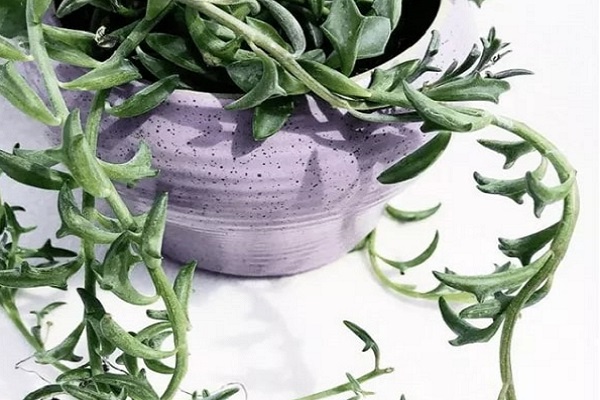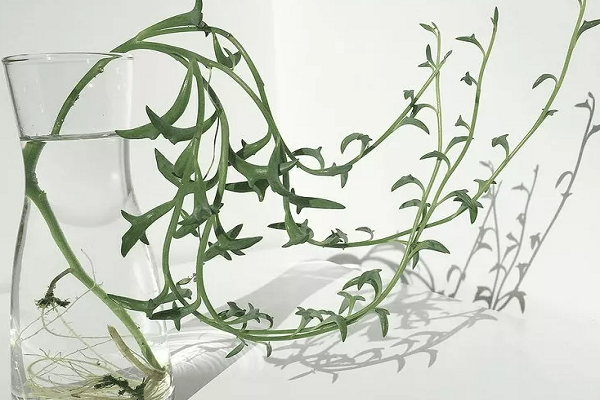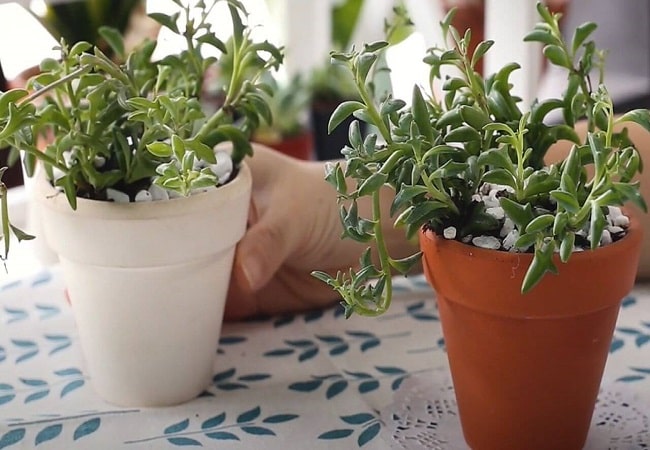Dolphin succulents, known scientifically as Senecio peregrinus, have taken the gardening world by storm with their unique and charming appearance. Aptly named for their leaves’ how to propagate dolphin succulents, these plants are a delightful addition to any indoor or outdoor succulent collection.
In this article, we will explore the fascinating world of dolphin succulents and unravel the secrets of their propagation. Whether you’re a seasoned green thumb or a gardening novice, our step-by-step guide will help you multiply your dolphin succulent collection with ease, ensuring a thriving and enchanting display that will bring joy to your space. So, dive in and let’s learn how to propagate dolphin succulents together.
Quick Navigation
Propagating Dolphin Succulents
Propagation of dolphin succulents is relatively easy, but the process must meet a few requirements before they can take root. The plants will do best in cactus or succulents with well-drained soil, so make sure to choose a large pot for the root system and drainage. They do well at a ph level of 6.6-7.5. They like warm temperatures, so propagation in the spring or fall is usually optimal.
Propagating dolphin succulents is a relatively easy process, which Th process can complete in various ways. The most common way to propagate dolphin succulents is using scions (seedlings) and stem cutting.
Propagate Dolphin Succulent

Dolphin succulent is a beautiful and unique plant that you can propagate from cuttings. The process is simple and only requires a few supplies.
- Get healthy cuttings from a plant about 3 to 5 inches long. To do this, use a clean knife or pair of scissors.
- The cuttings must come from the plant’s stem and have about two or three nodes.
- A node is a point at which the stem and root connect. It’s also where the new plant’s roots will grow.
- Leave the stem for a few days to dry out or “callus.” You can move on to the next step once the cut end of the stem is completely dry.
- Dip the end of the stem that has been cut into the rooting hormone.
- Once the cutting is ready, place it in a pot with fresh potting soil. Make sure that the soil is moist but not wet.
- Soil needs to be sandy or have a little bit of perlite in it so that it gets enough air and drains well.
- Place the pot in a bright spot and keep it moderately warm (between 68-77 degrees Fahrenheit).
You should see new growth on your dolphin succulent cutting within a few weeks!
Succulents From Seeds

Propagating dolphin succulents from seeds is a relatively simple process done at home. The most important part how to propagate dolphin succulents of propagating succulents from seed is to ensure that the plant has a good germination rate. Once the seeds have germinated, it is important to provide the plants with the appropriate growing conditions. If you want the best chance of success, buy seeds from a well-known store or seed distributor.
To propagate dolphin succulent from seed,
- The seeds can germinate faster by soaking them in warm water first, then in cold water.
- Make a small hole in the soil about half an inch deep.
- Each hole is separated from the next by about an inch.
- Place the dolphin succulent seeds into the hole.
- Add a thin layer of cactus or succulent potting soil over the seeds.
- Once the soil has completely dried out, water it. Following irrigation, how to propagate dolphin succulents this typically takes three to four days.
- Place them in a bright spot outdoors or under indirect light.
How To Propagate Dolphin Succulents In Winter

Propagating Dolphin succulents in water is relatively easy, but a few things to keep in mind.
- Cut a 5-inch (13 cm) healthy and sturdy stem from the mother’s plant with a clean, sharp knife.
- Remove all the bottom leaves from the stem to keep the leaves from rotting.
- Put the stem in a jar of water. Within a few weeks, you should notice new little roots developing on the stem, at which point you can transplant the cutting into well-draining soil.
Frequently Asked Questions
Is String Of Dolphins Toxic To Cats And Dogs?
Regrettably, the answer is YES. The string of Dolphins is toxic to cats, dogs, and other pets, so keep your furry friend away from it. Also, keep your Dolphin Plant out of the reach of curious children, as it can be mildly toxic to humans.
Is The String Of Dolphins Rare?
Yes, a string of dolphins is quite rare. There are only a handful of documented cases where a group of dolphins has been observed swimming together information. This behavior is most likely to occur in areas where food is abundant, as the dolphins work together to corral their prey.
Does A String Of Dolphins Need Direct Sunlight?
This depends on the individual needs and conditions of your dolphin pod. Most authorities agree that dolphins need direct sunlight to root succulents in soil.
How Fast Does A String Of Dolphins Grow?
This depends on dolphin species, environment, and food availability. Dolphins are expected to achieve full size within a few years.
Can You Trim A String Of Dolphins?
Trimming a string of dolphins is possible, but it’s not recommended. Doing so can cause the dolphins to become tangled, which may also lead to them getting hurt.
Conclusion
Propagating dolphin succulents is a rewarding and enjoyable process that allows you to expand your collection and share the beauty of these unique plants with others. By following the simple steps and guidelines outlined in this article, you can successfully propagate your dolphin succulents and create a thriving, charming display.
Whether you’re propagating for personal enjoyment or to share as gifts with friends and family, the captivating shape and low-maintenance nature of these plants make them an excellent choice for any gardener. Now that you have mastered the art of dolphin succulent propagation, let your creativity run wild and continue to explore the fascinating world of succulents!

My name is Md Deloar Hossain and I’m the creator of Club Gardening, designed for all your gardening ideas, gardening product reviews, and a place to help you find the best gardening experience possible.


